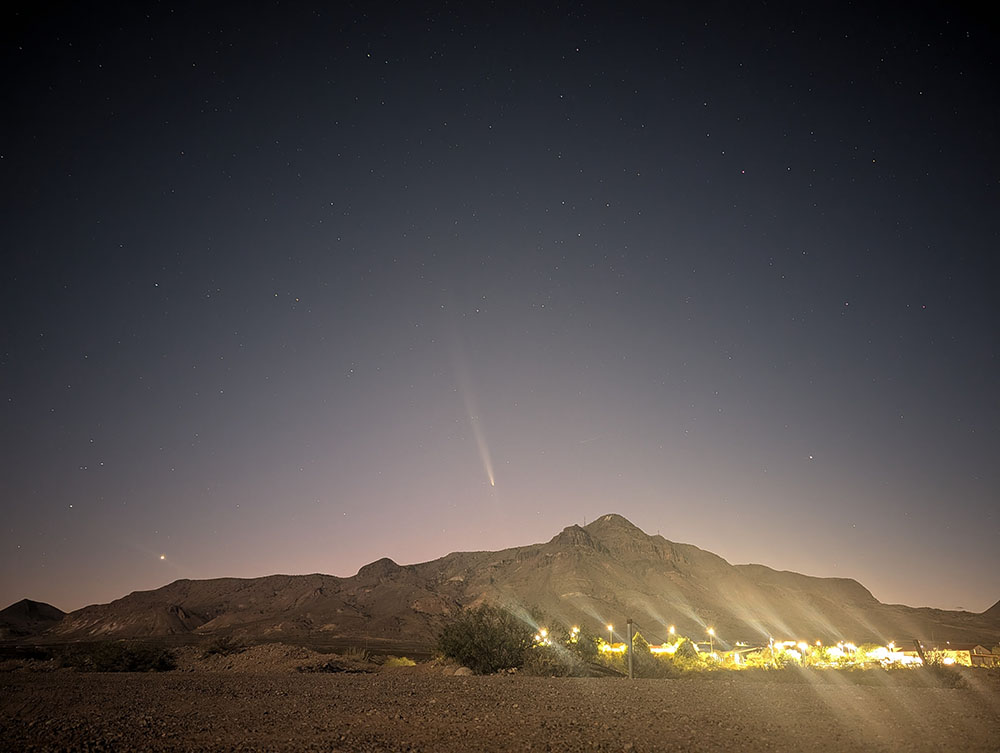NMT Astronomy Club
July Skies
june 30, 2025
Jon Spargo tells us what to expect in the summer night sky

Mercury continues its evening apparition at its greatest elongation from the Sun on July 3. Shining at magnitude +0.4 it reaches an elongation of 26 degrees east of the Sun. Jupiter will reappear, after passing conjunction with the Sun, in the early morning sky just above the east-northeast horizon.
Venus continues its brilliant appearance in the early morning sky. Shining at magnitude -4.1, it can be found in the constellation of Taurus the Bull, where its brilliance overwhelms the bright star Aldebaran.
Saturn continues its ascent into the early morning sky and has a close encounter with the Moon on July 16 (see below).
Mars continues moving lower, hovering just above the western horizon as it approaches conjunction with the Sun. Shining at magnitude +1.4, it will approach the bright star Spica on July 30 with only about 1.5 degrees separation.
The Moon will be in the first quarter on the July 2, full on July 10, last quarter on July 18, and new on July 24. Looking to the east around midnight on July 16, the almost three-quarter Moon rises with Saturn in tow. The two will be separated by about 2.5 degrees.
Looking to the east-northeast on July 21, about 45 minutes before sunrise, the waning crescent Moon will be above Venus. Looking in the same direction and time on July 23, the even thinner crescent Moon will be to the left of Jupiter. Looking to the west-southwest on July 28, about 45 minutes after sunset, the new crescent Moon will be just to the left of Mars.
For those of you interested in orbital mechanics, the Earth will reach aphelion, its farthest distance from the Sun, on July 3 at 2 p.m. MDT, when the Earth will be 94,502,714 miles or 152,087,376 kilometers from the Sun.
Clear skies!
For more information, please contact the NMT Physics Department at 575-835-5328, or visit https://www.mro.nmt.edu/education-outreach/star-parties/